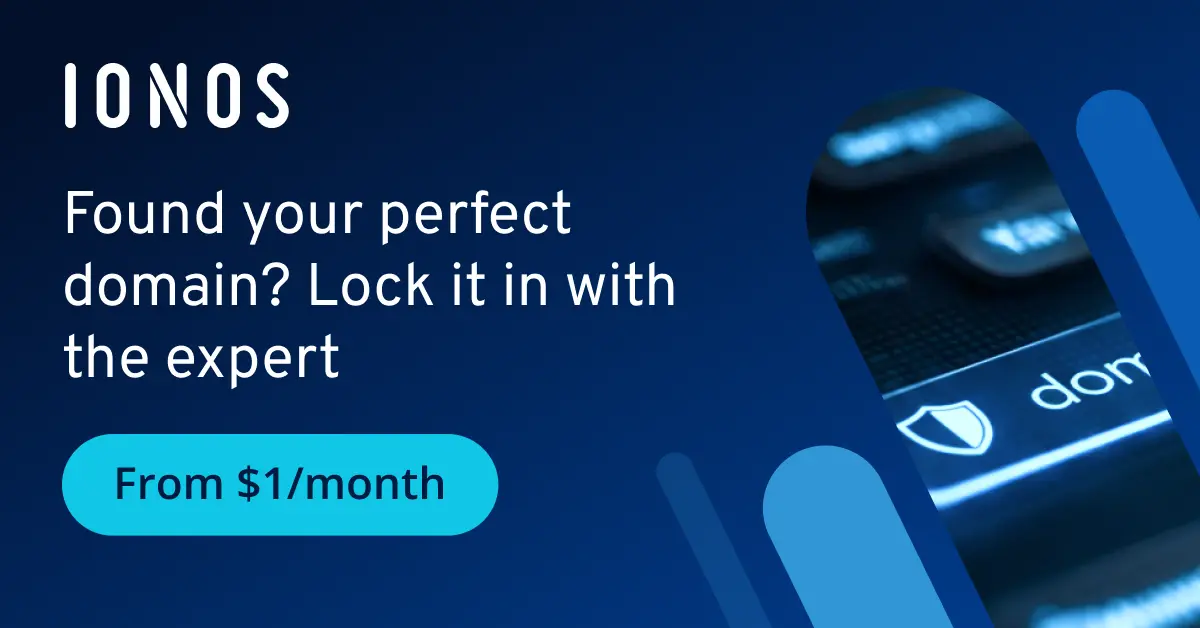Domain trading: How can you make money with domains?
If you choose the right domain name, it can be worth a lot of money. It doesn’t matter what kind of website you have published at the web address. In principle, you don’t even need a website to start actively domain trading, since the address itself holds value. If you own a domain that others are eager to claim, you could make a fortune with it. But how? What do you need to do to sell a domain name?
Step 1: How to determine the value of a domain
To be successful in domain trading, you first need to figure out what certain domains are worth. The first indication of value comes from the URL itself. Popular top-level domains like .com or .co.uk are much more in demand than newer TLDs like .app. Short, succinct domains are also better than longer, multi-word domains. Domains with multiple parts and unusual words are the least likely to sell and fetch low prices.
Domains are also traded with SEO aspects in mind. If the domain name already contains an important search term, the web address will most likely fetch a higher price. Other factors include trademark rights, existing traffic, backlinks, and the age of the domain.
To better understand the market, use online tools like NameBio, which show the sale prices of similar domain names. This gives you an idea of how much you can sell your domain for. While you want to maximize your asking price, setting it too high will discourage potential buyers. So, find a good balance.
If you really want to dive into domain trading, buying and selling domains regularly, you should always keep track of market trends. Observe how the market behaves over time. This will help you predict trends and determine which domains are worth investing in.
Step 2: Choose the right sales path
There are several ways to sell a domain. For example, you can place a visible advertisement on the domain’s homepage — a “For Sale” sign. Interested buyers can contact you directly to discuss the sale. Other domain traders find great success on platforms like eBay, which offer well-known and reliable infrastructure. When using eBay, you get the same features you know from other products.
There are also specialized websites for buying and selling domains. Platforms like Sedo or Flippa provide marketplaces where you can list your domain for sale. If you are looking to start domain trading — not just sell an unused domain but actively buy and resell valuable domains — these platforms are important.
Step 3: Provide necessary contact information
Generally, domain owners must disclose their contact information in the Whois database, which is publicly accessible. However, because visible Whois entries can be privacy concerns and lead to spam attacks, many domain owners keep this information hidden. But in domain trading, if you want to sell your domain for a high profit, you should make your contact details available. This allows potential buyers, such as professional traders, to contact you easily.
You can also highlight that the domain is for sale directly in the Whois entry. By adding “Domain for Sale” to your company name, potential buyers will know that reaching out is worth it.
Step 4: Create an appealing domain listing
Once you’ve selected a platform to list your domain, create your listing. Just listing the domain name and price may not attract many customers. It might not be attractive enough. However, providing additional information increases the chances of a sale:
- Product description: It might seem unusual, but you can provide a description for your domain. For example, mention the domain’s past ranking or specify the kind of website it would be perfect for.
- Image: Adding a graphic or a screenshot of the former website can encourage marketplace visitors to engage with your listing.
- Value prediction: If possible, provide insights into the domain’s current or expected future value to justify your asking price.
Not all platforms offer the option to include extensive information, but this doesn’t necessarily have to be a disadvantage. Many platforms let you pay to promote your listing. If you believe your domain is valuable, it might be worth investing in additional promotion.
Step 5: Choose the right selling method and prepare for payment
On many marketplaces, you can choose between two selling methods:
- Fixed price: Many buyers prefer this because they know exactly what financial commitment they’re making.
- Auction: Some buyers enjoy auctions because they feel they can get a bargain. As a seller, you may achieve a higher price since bidders could outbid each other for a popular domain.
Some marketplaces also allow buyers to make an offer. This opens the door to private negotiations.
Consider the payment process, as selling a domain works differently than buying goods at a store. To ensure mutual protection, many platforms offer escrow services as part of their deal. If you sell your domain outside a marketplace, you should definitely use an external escrow service to avoid legal disputes later.
Step 6: Transferring the domain
Once your domain is sold, you must transfer it to the buyer. The transfer process depends on the domain registrar where the domain was purchased. At the end, the new owner will be registered in the central registry, completing the sale. If you sold your domain through a marketplace, they will usually assist with the transfer process.
While you’re waiting for your domain to sell, you can still make money by parking the domain. domain parking lets you display ads under your URL and generate revenue until the domain is sold.
By following these steps, you can successfully sell a domain name and get into domain trading. Whether you’re looking to offload a domain or actively buy and sell, the process can be rewarding — especially when done with the right strategy.
- Free Wildcard SSL for safer data transfers
- Free private registration for more privacy
- Free Domain Connect for easy DNS setup

